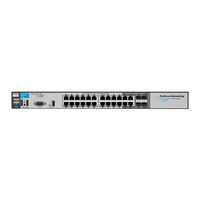User Manuals: HP J9049A Managed Gigabit Switch
Manuals and User Guides for HP J9049A Managed Gigabit Switch. We have 1 HP J9049A Managed Gigabit Switch manual available for free PDF download: Access Security Manual
Advertisement
